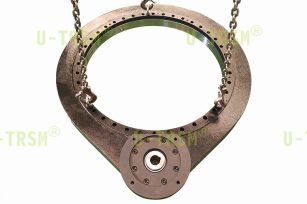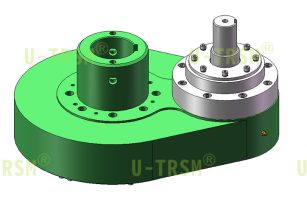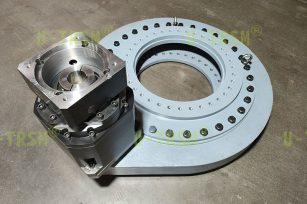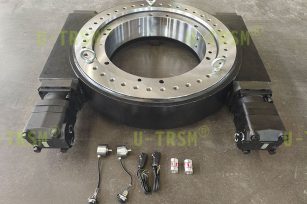Latest Products
We keep on updating and iterating our products, optimizing the structural design and creating a more scientific and reliable slewing drive device.
-
 Selection and characteristics of slewing d...
Selection and characteristics of slewing d...This slewing drive is used in automated mixing equipment. The customer requires that it rotate in the same direction ...
Detailed instructions Send mail -
 Analysis of the high speed rotating double...
Analysis of the high speed rotating double...This double row ball gear type slew drive is used in automation equipment. The customer requires ultra-high speed ope...
Detailed instructions Send mail -
 30855 slew drive assembly: precise protect...
30855 slew drive assembly: precise protect...Introduction In the field of industrial transmission, U-TRSM has always been a leader in innovation, committed...
Detailed instructions Send mail -
 High load slewing drive solution for deep ...
High load slewing drive solution for deep ...This slewing drive is used in marine machinery and equipment, suitable for underwater locations at depths of up to 30...
Detailed instructions Send mail
Introducing helical gears with different helix angles to cope with working conditions
Publish time:2025/01/09 News Views:163
U-TRSM engineers often encounter the need for helical gears in their design work for slewing drives, and the selection of helical angles for helical gears (15°, 20°, 30° are commonly used) often depends on the specific needs of the use and operating conditions. Below is our summary of the different helix angle applicable to some working conditions, for your reference:
1. Helical angle 15°, lower axial forces. Due to the small helix angle, the axial force generated is relatively small and the requirements on the bearings are low, making them suitable for applications that are sensitive to axial forces. Higher efficiency, smaller helix angle means less friction loss and higher transmission efficiency. Suitable for working conditions with light or medium loads, such as precision instruments and small machines. Suitable for high-speed running occasions, because the smaller axial force can reduce the wear of bearings. Not very demanding on noise, e.g. not particularly strict on running noise.
2. Helical angle 20° provides a good balance between load carrying capacity and axial forces, allowing a certain amount of load to be carried without excessive axial forces. Can provide better running smoothness and lower noise. Suitable for medium load conditions, such as general mechanical equipment, conveyor systems, etc. Suitable for medium-speed operation, providing good overall performance. Suitable for applications where noise is required but not particularly stringent.
3. Helical angle 30°, higher load carrying capacity, suitable for heavy-duty working conditions. The larger helix angle makes the gears run smoother and less noisy. Suitable for heavy load or high torque working conditions, such as large industrial equipment, heavy machinery and so on. Suitable for low-speed operation, because the larger axial forces have relatively little effect on low-speed operation. Suitable for occasions with high requirements on operation noise, such as precision processing equipment, medical equipment, and so on.
The above is the introduction of different helix angles of helical gears to cope with different working conditions summarised by U-TRSM, simply put:
The 15° helix angle is suitable for light or medium loads, high speeds and low noise requirements.
The 20° helix angle is suitable for medium loads, medium speeds and certain requirements for noise.
The 30° helix angle is suitable for heavy loads, low speeds and high noise requirements.
- What is included in the heat treatment of ...
- How to choose the roller length of the thr...
- What is the core turning component of the ...
- What are the effects of extreme temperatur...
- Comparison of slewing ring and spur gear s...
- Spur gear slew drive housing select nodula...
- Precision slewing bearing clearance select...
- The importance of grease to spur gear slew...










